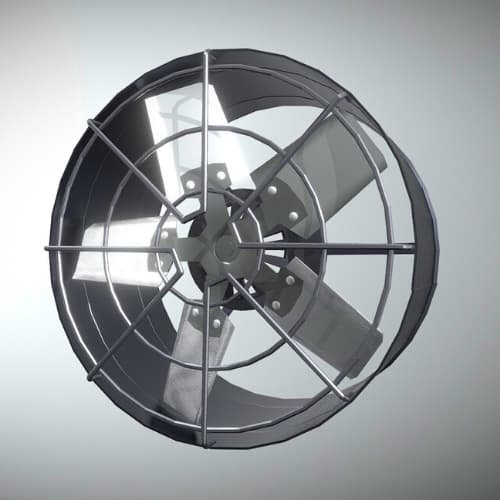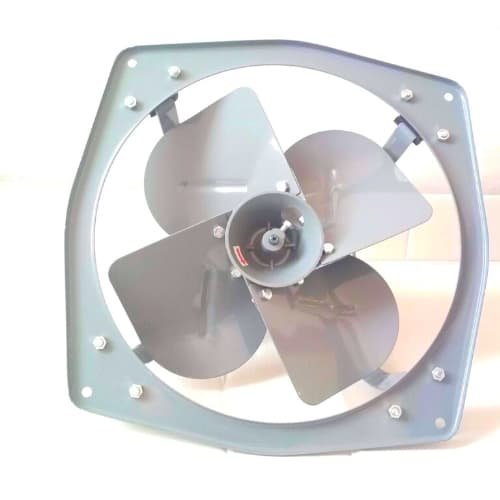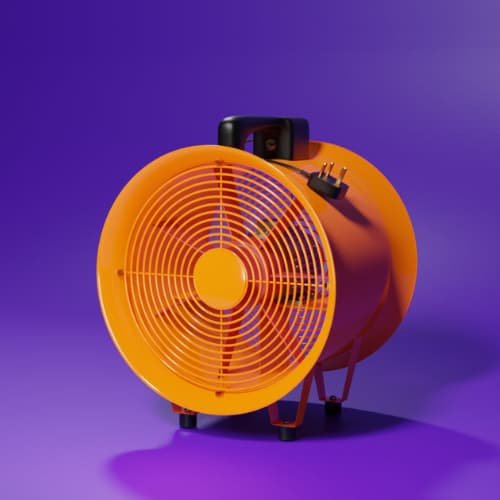How to Select An Exhaust Fan? A Complete Guide
The NEC (National Electrical Code) and local building codes require bathroom vent fans for bathrooms that don’t have windows that can be opened to allow ventilation.
So, how to select an exhaust fan and install it properly? They may be required in certain jurisdictions, even if there are windows.
Vent fans do two things. They remove hot and moist and can also remove odours. Moisture can lead to mould growth, and odours can cause general discomfort.
Even if your fan meets minimum requirements, installing a small or weak fan can be costly. It is important to know how vent fans are sized and how to select the right size for your space.
Standard Fan Sizing
 The first step on how to select an exhaust fan is to measure the sizing. Bathroom vent fans are rated according to the airflow they can move. You can measure it in cubic feet per hour or CFM. Bathrooms that measure 100 square feet or less are eligible for standard fan sizes.
The first step on how to select an exhaust fan is to measure the sizing. Bathroom vent fans are rated according to the airflow they can move. You can measure it in cubic feet per hour or CFM. Bathrooms that measure 100 square feet or less are eligible for standard fan sizes.
You need at least 1 CFM for every square foot of space. Multiply the length by the width to determine how many square feet your bathroom has.
If your bathroom measures six feet in width and nine feet in length, it will be 54 square feet. It should be rated at least 54 CFM. Before you shop, here are some things to keep in mind.
- It’s a good idea for the fan to be slightly larger than it actually is. For example, in our 54-square-foot sample, it is a good idea for a 60 CFM fan to be added for good measure.
- A second reason to consider multiple fans is if you have separate bathrooms or rooms with alcoves or jetted tubs.
- A fan must not exceed 50 CFM. This means that if you have a bathroom measuring 42×42 inches, you will still need a fan with 50 CFM.
A factor to consider when sizing vent fans is the length and size of the duct. For most 50 CFM fans, a 4-inch round duct will work well.
As you move up to higher CFM fans, you must increase the duct size to 5- to 6-inch round. Your duct will be able to carry as much air as possible depending on the length of the run and the number of fittings, elbows, and so forth.
Expert Tip

After you have chosen the right size fan for your bathroom, take into account the sound rating. This is determined by the fan’s sone rating.
One rating indicates how loud the fan is. A quiet fan is a good investment, especially in a bathroom where you want to be peaceful and relaxing.
Although there are complications and tough formulas to calculate the proper size of the duct for different lengths and configurations, the instructions you get with the fan will provide the necessary information.
Make sure that there is enough space to install the fan. Insufficient ventilation will result if you try to push too much air through a duct that is too small. Also, if you select which exhaust fan is the best kitchen, you won’t face difficulties even after using it for years.
Size for Large Bathrooms

You can set the size of the exhaust fans based on the number of fixtures in bathrooms larger than 100 square feet. Add up all the CFM ratings required for each fixture to calculate the formula:
- Bathtub: 50 CFM
- Jetted tub: 100 CFM
- Shower: 50 CFM
- Toilet: 50 CFM
A bathroom that has a single shower and toilet will need a 100 CFM fan. A bathroom with a jetted bathtub, toilet and shower, on the other hand, will require a 200 CFM fan.
For rooms with tall ceilings (well above eight feet), you can use another calculation method. This method involves multiplying the square footage and the ceiling height, then dividing by 60 (minutes in an hour).
After that, multiply by eight (recommended air exchanges per hour). A room measuring 120 square feet with a 10-foot ceiling would be an example.
- 120 x 10 = 1200
- 1,200 divided by 60 = 20,
- 20 x 8 = 160 CFM
Note – Do you have interest in sewing? Read Janome 5812 Review and choose a suitable model for yourself.
You May Need a Second Fan

Yes, this is an important part on how to select an exhaust fan. It’s a smart idea to install an exhaust fan in your bathroom that can be used for the shower or toilet. A 50 CFM fan will suffice if the space enclosed is small. If the space is large enough, a 50 CFM fan should suffice.
Remember that fans need airflow in order to function properly. The fan will not perform well if the enclosure if you shut the door tightly, and the gap between the bottom and the door isn’t sufficient.
You should allow the door to open slightly when you use the shower or toilet when the enclosure’s vent fan runs. A louvred door that allows for airflow is another option.
Expert Tip

You can fit the Vent fans with heat lamps, ceiling lights or blue-tooth speakers. Follow the same room guidelines for sizing the fan capacity of the unit.
However, be aware that a vent fan with accessories (especially heat lamps will likely require its own dedicated circuit.) The local electrical codes allow the vent fan unit to be powered by the general lighting circuit.
